The Multimillion-Dollar Race: Behind the Scenes of the Most Exhilarating Sport on Water

In November 2024, a group of elite athletes descended on Port Mina Rashid, Dubai. Tourists expecting to see the usual sleepy array of super-yachts and luxury cruise liners would have been shaken awake by the sight of 12 brightly colored boats cutting through the sea, suspended above water, as spectators roared in the grandstand.
This was the first race of the Rolex SailGP 2025 Season Championship, the starting gun on an intense, globetrotting league that puts the world's most decorated sailors on its fastest racing boats. Now, in its fifth season, 12 teams sail in catamarans known as F50s, the sailing equivalent of top-notch racing cars.
Capable of top speeds of over 60 mph—and set to become even faster as new technology rolls out—the boats are lifted above water by a system of foils and rudders, which are as delicate as they are sophisticated. One wrong move or slight miscalculation and the entire thing can capsize.
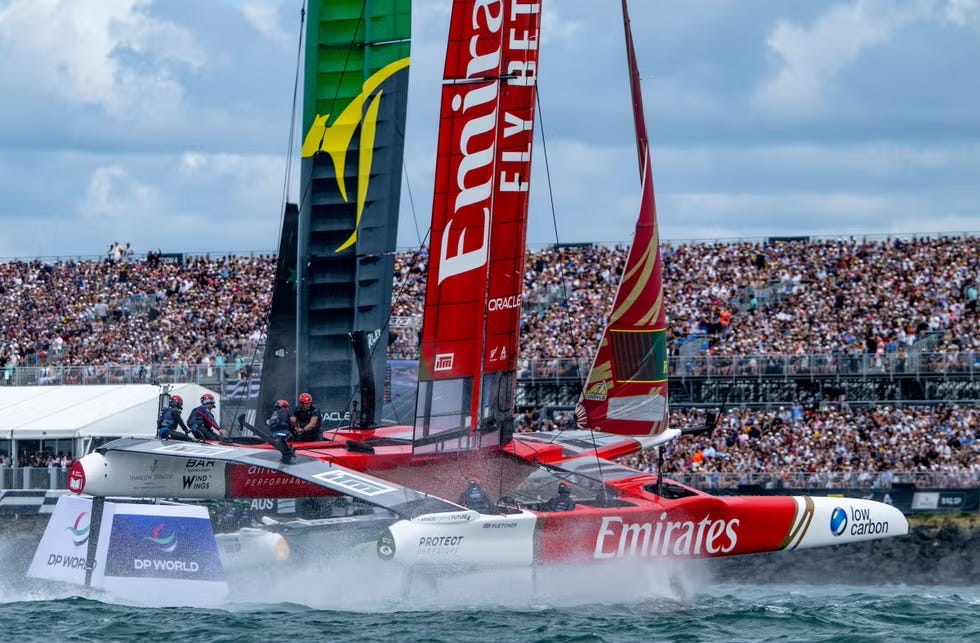
"The F50 is absolutely incredible to drive," says Dylan Fletcher, a former world champion and driver of the Emirates GBR SailGP team. "It's not only fast—you get the intense G-forces 'round the corner. Even just crossing from one side of the boat to the other is exhilarating."
"The racing is unbelievable," adds Tom Slingsby, driver of the Australian team. "But more than that, [the appeal] is the format. Previously, the top events in sailing would happen once every four years, whereas this is an annual competition."
Certainly, the league is worlds apart from the traditional sailing scene. Its Grand Prix are glittering events with celebrity guests and performances at the Après-Sail entertainment post-racing. There is a record-breaking prize haul of $12.8 million up for grabs across the season, including $2 million for the winner of the grand final. And, in the biggest fundamental difference, every boat that races has at least one woman on board.
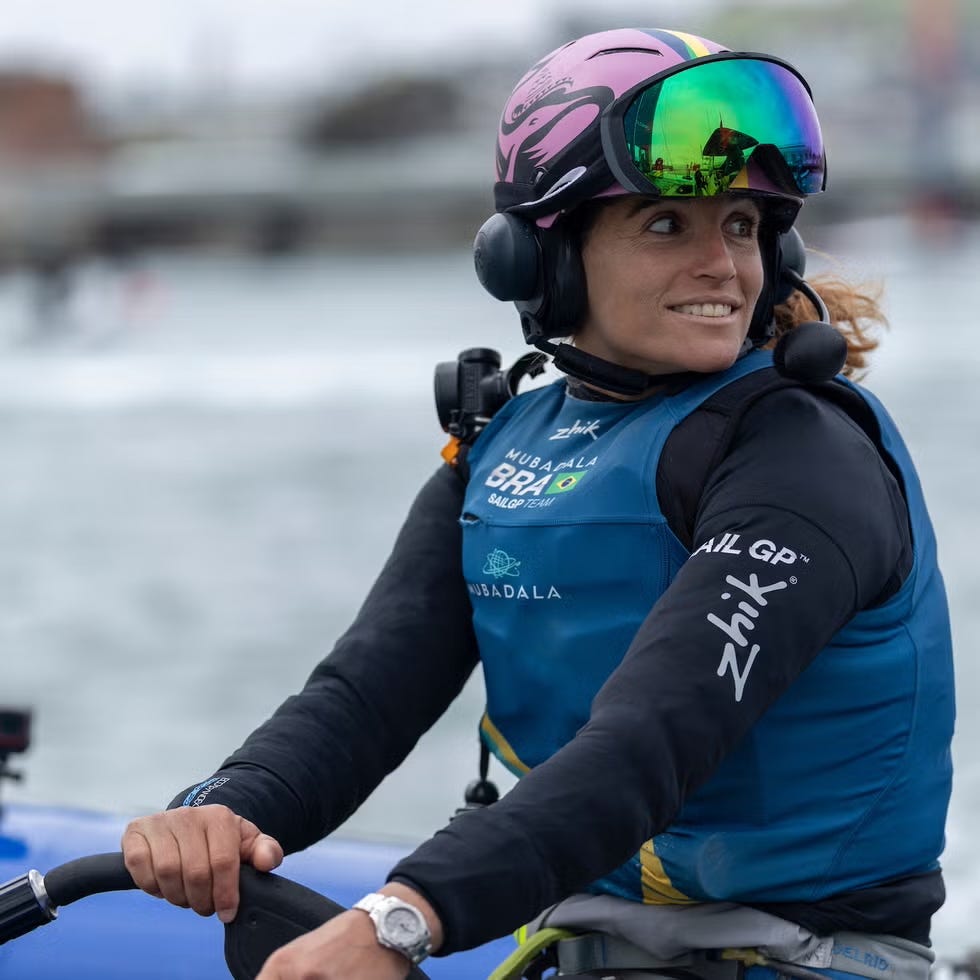
That shouldn’t feel radical in 2025, but the world of sailing has always been heavily male-dominated, and progress in the sport has been slow. In 2021, ahead of its second season, SailGP announced that men and women would race side by side in every team going forward, and launched an accelerator program to drive further change.
The effects are already tangible. This season, the league has welcomed its first female driver, Mubadala Brazil’s Martine Grael, and by 2030 it aims to have two women per racing crew on every team. For Grael, the mission goes beyond any one league or discipline. Rather, it's about changing "how we are perceived, not just in sailing, but in sports in general."
Both Fletcher and Slingsby were part of the first-ever SailGP season in 2019, which surpassed all expectations, drawing crowds of 133,000 across five events and a global audience of 1.8 billion.
But while Slingsby has been a mainstay—leading his team to victory in three out of four years—Fletcher was relieved of his duties after a single season by Sir Ben Ainslie, the most successful sailor in international history, and now the owner and CEO of the Emirates GBR team.
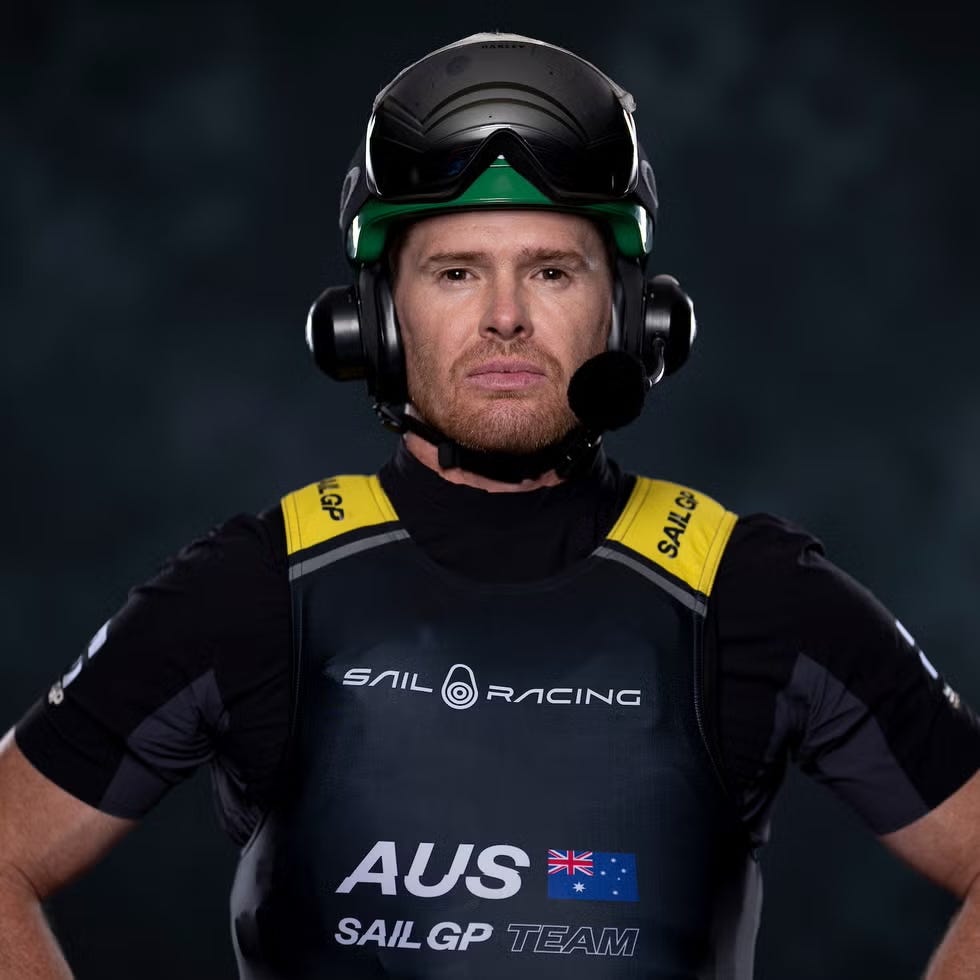

"It was heartbreaking to be honest—it took me a little while to get over that," Fletcher admits. But ask anybody who's been on the receiving end of a breakup, and they"ll tell you: Heartbreak can be an incredible motive.
After that first season, Fletcher went on to win international gold medals in 2020 and 2022, both in the 49er class. But the F50 was still calling. "I really put in everything I could to get back to SailGP," he says. And judging by his performance this season, he still has a point to prove.
"We have a long history of sporting rivalry."
The 2025 season stretches across 12 events and five continents, with big hitters including New York, Portsmouth, and Abu Dhabi, which will host the grand final in November. At the time of writing, a single point separates Emirates GBR from Australia, which is atop the leaderboard.
Slingsby's team finished third on points in San Francisco, the fifth event of the season, though the Australian F50 suffered a dramatic wing collapse in the penultimate race of the weekend and were unable to compete in the final. No athletes were injured, and repair works are being expedited to ensure the team can compete in upcoming events.
If there was a keen rivalry between the Emirates GBR and Australia teams before, it's nothing compared to now.
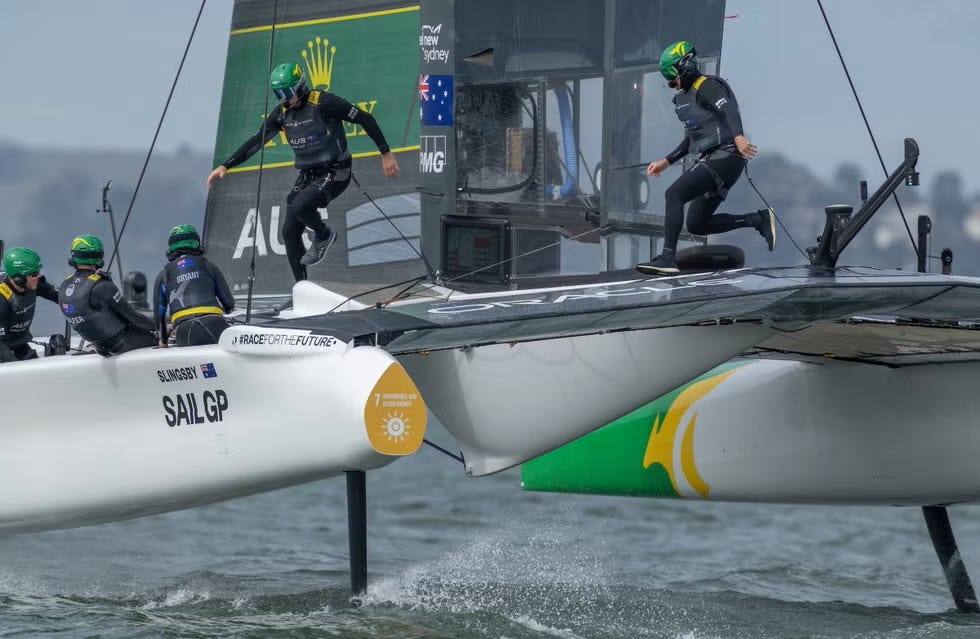
"Australians love competing with the British—we have a long history of sporting rivalry with them," says Slingsby. "Personally, you have people you want to beat more than others, and people who, if they beat you, you're going to get frustrated by."
It's fair to say he's feeling the heat—after missing the podium in Dubai, Australia has been up there in every race, bar San Francisco, since: "We want to get Australia back to the top. We want to prove that Australia is the best sailing nation in the world, and the best way to do that is by winning SailGP. Obviously there are external pressures as the three-time winner. But I don't think any of that pressure amounts to what I put on myself."
As well as being the team driver, Slingsby is also its CEO. He says the most remarkable change he's witnessed in the five years since the inaugural season has been its explosive growth: from six teams to 12, five races to 13, with huge leaps in followers, broadcast partners, and commercial opportunities.
Teams have gone from being league-funded to now mostly private-owned. Rolex is now SailGP's title partner, perhaps the biggest sign of its entering the sports world's big leagues.
"A true competition of skill and athleticism."
For SailGP CEO Russell Coutts, himself a gold-medal-winning yachtsman, the appeal of the sport has nothing to do with traditional sailing. "We have always said SailGP is for the racing fan, not your typical sailing fan," he says. "This is the very best of high-speed, high-tech racing, but on water."
For fans, there's a shock and awe created by "the spectacle of these insanely fast, eye-catching F50 flying catamarans that lift out of the water on hydrofoils," he adds.
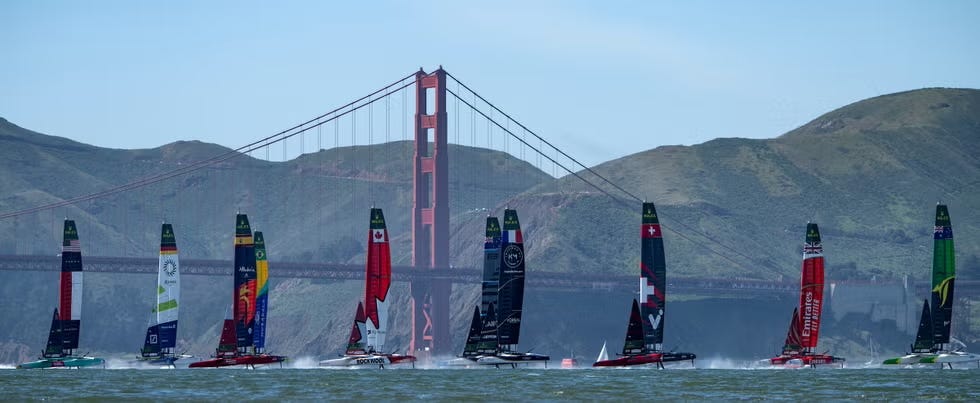
"The teamwork required to make these boats sail is incredibly challenging," says Fletcher, who as driver leads the crew of six required to sail the boat. He directs the strategist, who analyzes everything from wind conditions to data and video feeds; the flight controller, whose job is to keep the vessel aloft; two grinders, who generate power for the wing (sail); and the wing trimmer, who controls it.
"The boats look like they're easy, but they're far from it," he says. "We're always trying to find the limit, almost like you would in a race car.”
For Coutts, the fact that each team races on an identical boat makes it a “a true competition of skill and athleticism," he says. "Whether you’re watching from home or in our stadiums on the shoreline, the sheer thrill of seeing these boats up close, battling it out at high speed, is exhilarating. The skill of the athletes is obvious when one sees how close the boats get to each other at such high speed. It's an adrenaline rush that speaks for itself, and that's a big part of what makes SailGP stand out."
To discover more, visit SailGP.com.
esquire





